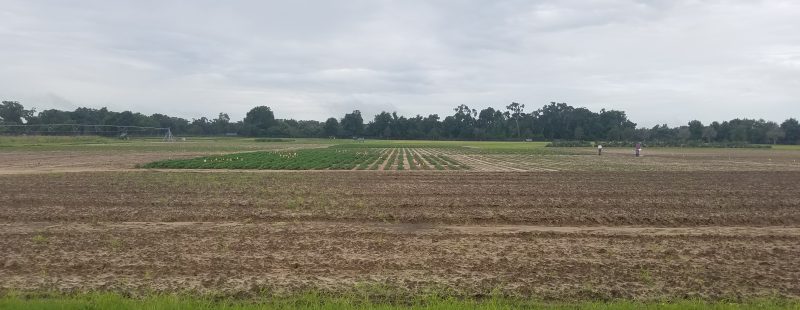The peanut field conditions have gone from hot and dry in early June to a mix of wet and dry at the end of the month across much of Florida’s peanut production area (Figure 1). The crop was definitely stressed by the drought and heat with Aspergillus crown rot (Figure 2) and early season white mold or stem rot (Figure 3) being the diseases of concern during this period. There were also many disease look-a-likes that showed up during this plant stress period. Some look-a-like examples include surfactant burn (Figure 5), phorate burn and thrips damage. Most plants should grow out of these types of damage. As we move later into the production season, and hopefully have rains return to much of Florida’s peanut producing areas, there are some observations to keep in mind about peanut diseases.
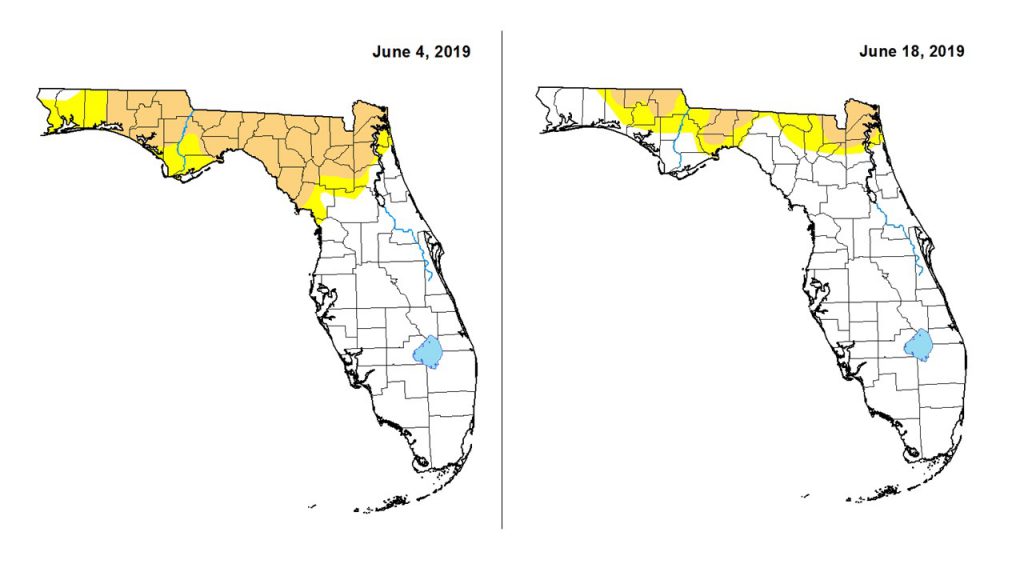
Figure 1. Drought monitor maps from June 4 and 18, 2019 shows the changes in moisture observed in June across Florida’s peanut production regions. More information at https://droughtmonitor.unl.edu
Aspergillus Crown Rot damage should not expand much beyond what has already been observed for this disease. Which is a positive, since unfortunately, there is little that can be done for it once it is seen in the field. In-furrow applications of products such as Abound (a.i.= azoxystrobin) are helpful, but the best management strategy is to plant quality, treated seed using the best agronomic practices possible.
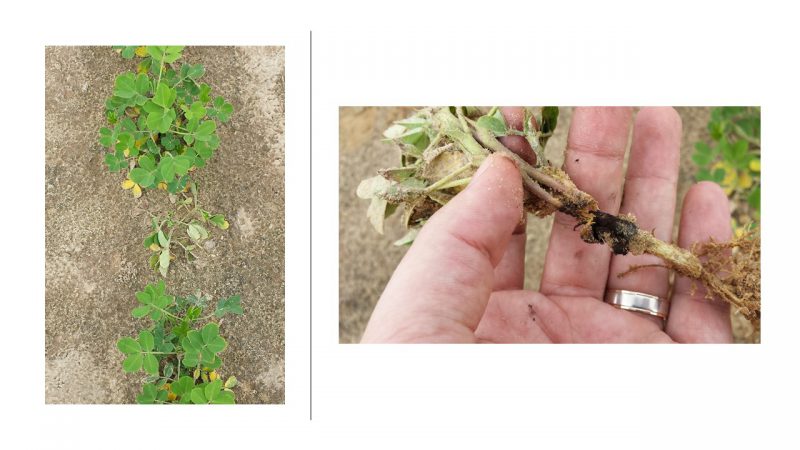
Figure 2. Aspergillus crown rot on peanut. Typically effects young plants which look wilted or dead. Black spores can typically be seen around the crown.
White Mold (Stem Rot) has been observed in Florida, Alabama and Georgia so far this year. The hot and dry temperatures are conducive to this disease’s development and spread. It is important not to fall behind in your management of this disease, especially in fields with a white mold history or short-term rotation (< 2 years) between peanut crops. This disease can attack the crop underground and often will go unnoticed until canopy closure or later (60 days after planting [DAP]). Thus, producers should be prepared to aggressively manage this disease. One possible option is to include a white mold specific fungicide (e.g tebuconazole) at 45 DAP, which is earlier than the usual 60 DAP application in the Peanut Rx guides. Varietal susceptibility should also be considered when deciding what and when to apply for white mold control. More information about varieties can be found in the article: Peanut Variety Options for the 2019 Season.
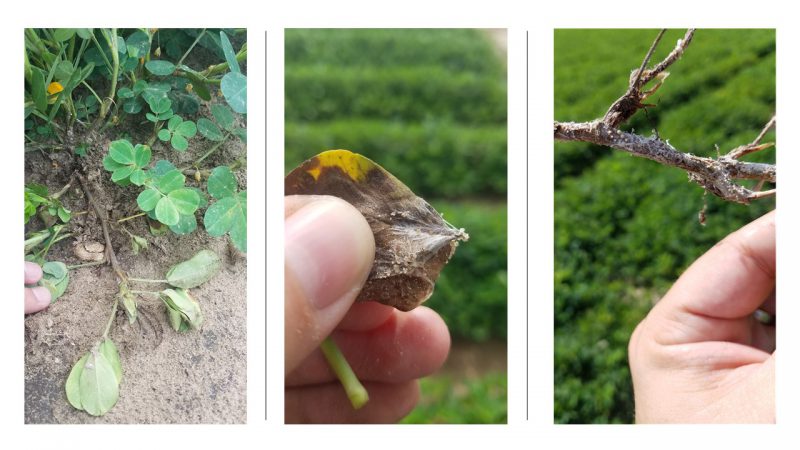
Figure 3. White mold (stem rot) symptoms and signs on peanuts. Early season symptoms can start on the runners with fungal growth being observed on dead leaves. Later in the season this fungal growth can be seen on the roots and stems with little balls changing from white to yellow/brown.
Tomato Spotted Wilt Virus (TSWV) (Figure 4) has been more prevalent this year in Florida’s Panhandle, and has also been observed to be greater than normal in Georgia. This disease is of greatest concern on early planted peanuts (May 10th or earlier), and in fields that did not use the insecticide phorate (Thimet). Plants infected with TSWV will never recover and are severely limited in their yield potentials. Nothing can be done to further manage TSWV this season, but continued monitoring is important for future rotation planning. Options for future TSWV reducing management techniques can be found in the Peanut Rx.
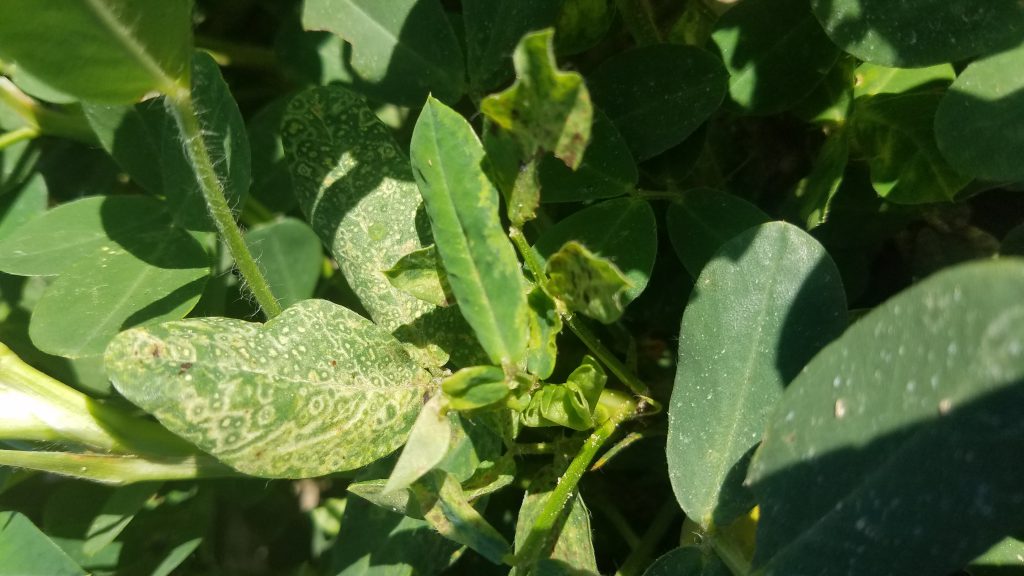
Figure 4. Tomato spotted wilt virus symptoms on peanut leaves. This virus can also cause severe stunting of the plants.
Early and Late Leaf Spot have not been an issue, yet, as the dry weather likely gave us a reprieve from these diseases. However, early leaf spot was recently (June 26) identified in Marion Co., Florida. Returning rainfalls accompanied with canopy closure means it will be important to maintain protection against these diseases. It is important not to fall behind on your leaf spot management program and use quality fungicides that can manage the specific pathogen present in your field or area. There are many options available for leaf spot management. Should you have questions about these options contact your local Extension agent, or the author for more information.
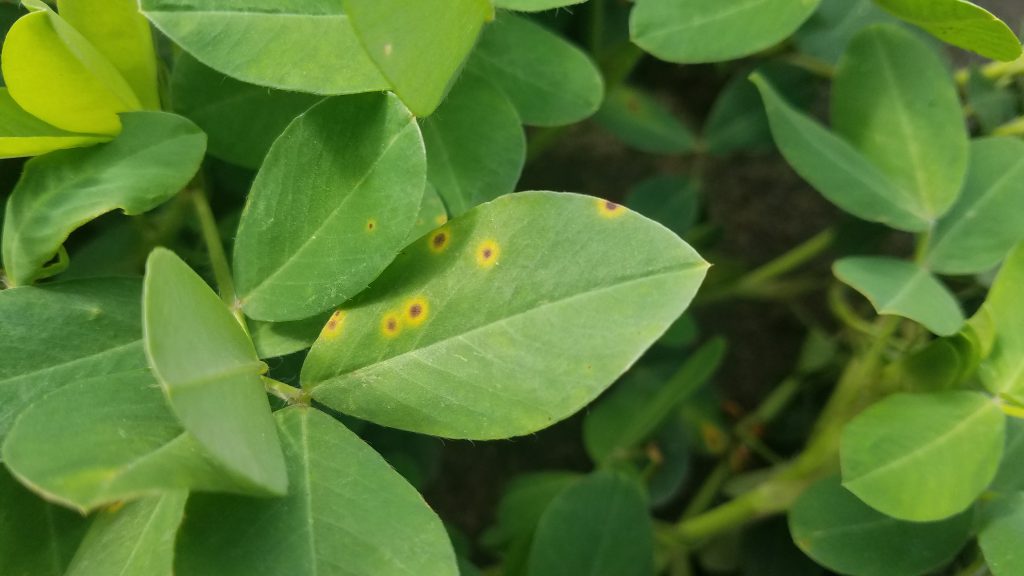
Figure 5. Surfactant burn on peanut leaves that “looks like” early leaf spot. No extra management is needed for this issue.
Some other diseases to pay attention for in 2019 are Rhizoctonia Limb Rot, Cylindrocladium Black Rot (CBR), Pythium Pod Rot, and Peanut Rust. Weather and field conditions greatly dictate the presence of diseases, so contact your local Extension agent, or the author for more information on their identification, monitoring and management.
–
For more information on peanut production, use the following links:
2016 Evaluation of Foliar Fungicides for Disease Control in Peanut in Jay, FL
Peanut Rx
Management and Cultural Practices for Peanuts
2019 Quick Reference Peanut Production Guide
- Fusarium Wilt: A Recurring Concern for Watermelon Farmers - April 19, 2024
- Disease Notes for the End of the 2023 Florida Peanut Season - November 3, 2023
- Identifying and Managing Corn Leaf Blights - May 19, 2023

